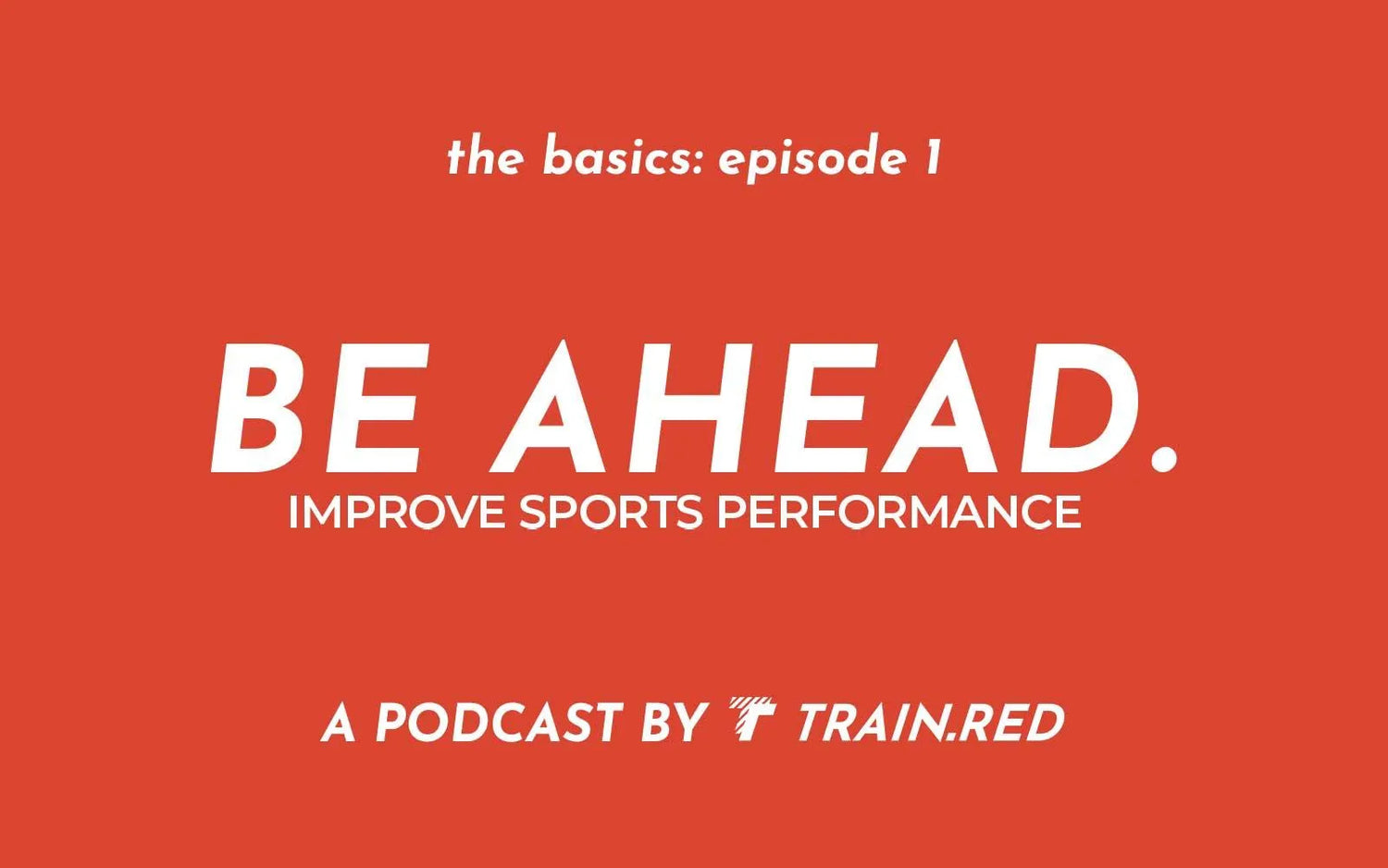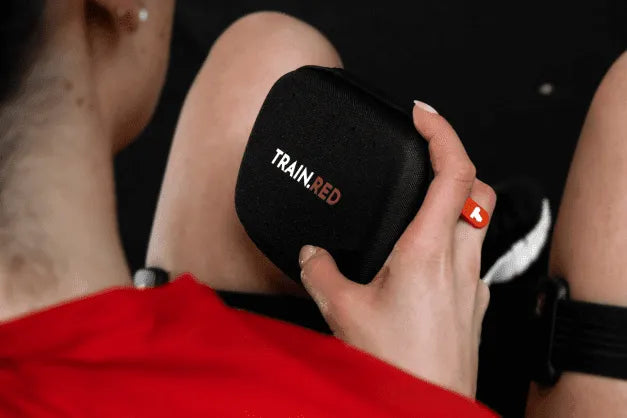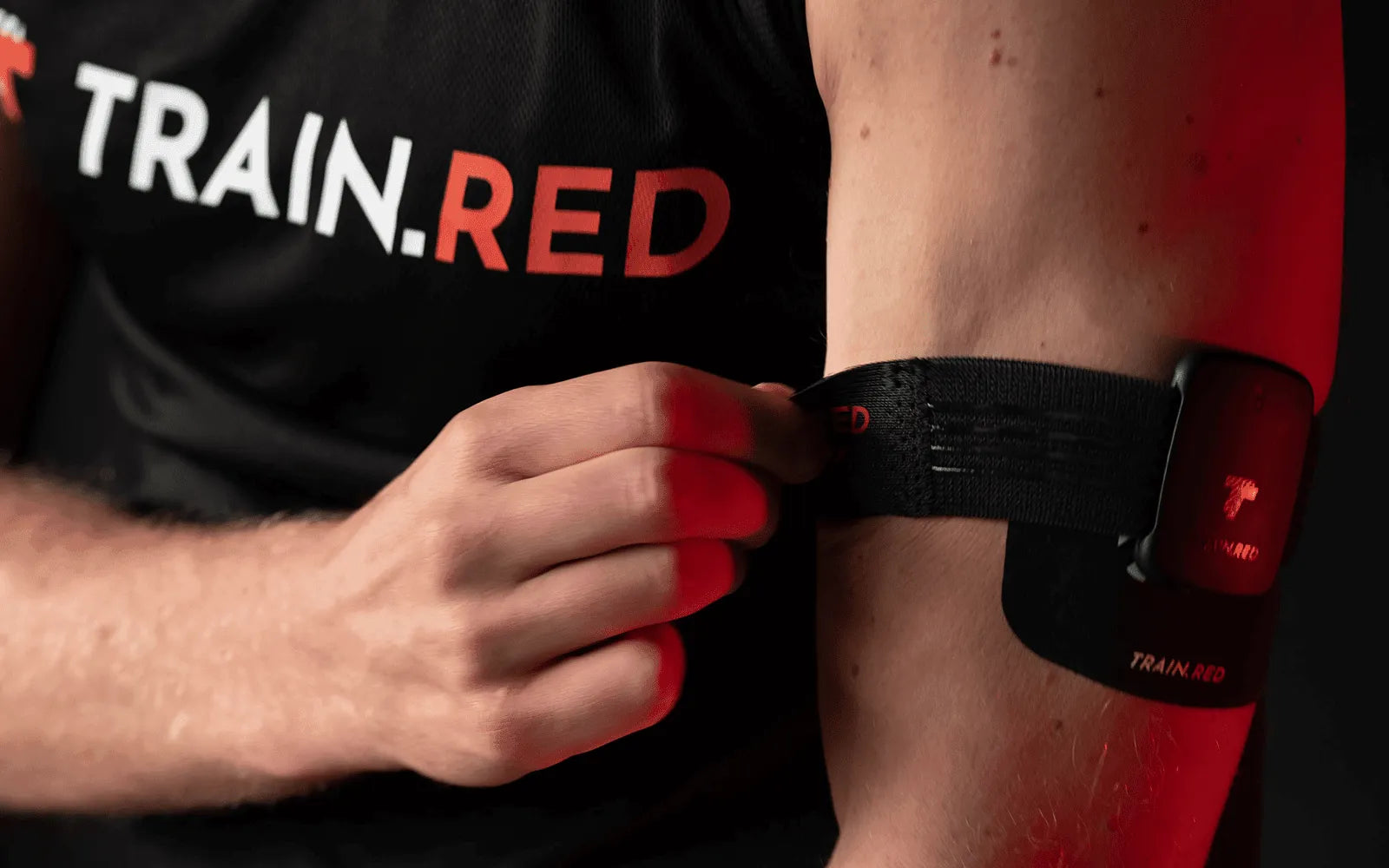In this episode, your hosts Kim and Jeroen will be discussing NIRS. What is Near InfraRed Spectroscopy? What does it do? How does Train.Red use it? How is it used to measure muscle oxygen levels? And most importantly; What can you do with it? Want to know the answers to these questions as well as the difference between pulse oximetry and heart rate? Press play!
Transcript
Introduction: who are the hosts?
00:00 (Kim ter Stege)
Welcome back to BE AHEAD. podcast by Train.Red. My name is Kim ter Stege, I'm part of the Train.Red team and I'm the host of this podcast. I'm a sports enthusiast. I started my fitness journey after losing a lot of weight and I got very interested in fitness and health. I'm also a content creator. You can find me at @kimterstege across all platforms and I also have my very own podcast. I'm here with my co-host Jeroen.
00:24 (Jeroen Molinger)
Hi, my name is Jeroen Molinger. I’m the Lead Clinical Exercise Physiologist at Duke, at the Human Pharmacology and Physiology Lab, Research Program Director of the lab, and also Research Program Director of Duke Heart Transplantology at the Cathlab. My main focus in the research we do at Duke is all related to assessing muscle physiology and cardio-respiratory function.
An introduction to NIRS: what is NIRS, what does it stand for, what,- and how does it measure?
00:45 (Kim ter Stege)
Okay, Jeroen, today we're going to talk about NIRS; what it is, what it does, what you can measure with it, and also if there's any relation between NIRS and performance, recovery, and sports in general. So can you tell me a little bit more about what NIRS is exactly?
00:58 (Jeroen Molinger)
Right. NIRS, what it stands for is Near-InfraRed spectroscopy. So it's a way of measuring the oxygenation or de-oxygenation of tissue, like muscle with the usage of light. It's an optical tool where we measure the amount of oxygen being bound or are being used in a muscle. This is kind of an interesting way of looking at a muscle, where you normally would only look at how fast you can run or how much power output you have on the bike. It's interesting to see how the specific muscle is responding to your exercise or your test. To have a better understanding of muscle physiology, but also muscle performance. And when you have a NIRS device like a sensor on every single muscle of interest you have, you can even use multiple sensors to have a better understanding of which muscle is potentially limiting or is responding well. That can be used for training purposes or even doing a match, or when you have a specific goal when you want to know if you're responding well to your exercises.
02:03 (Kim ter Stege)
Okay. So put it a short NIRS like infrared lights, and you can use that to shine light on your muscles and get a better understanding of how your muscles work exactly during training, during a match. Just all throughout.
Do you want to know more?
Visit the page Tech.Red!
SpO2 vs NIRS, what is the difference
02:17 (Jeroen Molinger)
Exactly, exactly. I think that people will know mainly also due to COVID that the measurement of saturation, which you can do with SpO2 currently with devices like Fitbit and Garmin is kind of the same technology. We measure the saturation of the tissue, whether with a Fitbit or Apple watch, for instance, that's saturation from the skin, the upper skin. Only NIRS is far more powerful because the power of the light is far higher, so it can go much deeper into tissue and that's the reason why we measure not (just) the skin, but really measure inside the muscle itself!
02:57 (Kim ter Stege)
Okay. So NIRS is actually pretty common?
02:59 (Jeroen Molinger)
No. No, Sorry. No. No. No. No. Not NIRS is common, SpO2 is common. For instance, during COVID, a lot of people were measuring their saturation with a finger clip or with an Apple watch or a Nonin that is the SpO2 number, that gives gave the amount of oxygen that's inside your blood, that is your circulating blood, not your muscle. And what NIRS does is as having a better understanding or better way with the usage of a far more powerful LED lights, which can shine not only to the skin but even through the skin into the muscle. And then you have a way of assessing the same kind of metric like SpO2 with an inside of muscle.
03:37 (Kim ter Stege)
So it's like a very advanced way of knowing the number?
03:42 (Jeroen Molinger)
Yeah. And also, of course dynamically. Because we can do exercise, you can move around and still have that sensor on your leg or on your arm or whatever you are interested in assessing the muscle activation.
NIRS simplified
03:57 (Kim ter Stege)
Going in a little bit more about what you can measure exactly with NIRS. Can you tell me about, like you were talking about saturation but can you explain it in a very simple way to people that are not really known with the technique? Like what it does exactly? And what it says about your body?
04:15 (Jeroen Molinger)
Right, so kinda going, a little bit back, to basic physiology. But when we have a muscle, which is being used, there is a demand. And when there is a demand in a muscle, will we get a lot of blood going through the muscle. So when you put a light on a muscle with the flow of blood (because there was a demand of oxygen) then when you have a hemoglobin molecule - and a hemoglobin molecule is, well you can kind of compare with a truck. So the truck that goes from the lung to the muscle, and that truck can carry a O2 molecule, and that O2 molecule comes on the truck all the way to the muscle. The truck releases that molecule and that will be used at the level of the muscle.
But if you see hemoglobin, so a truck with O2, so hemoglobin with O2 or hemoglobin without O2, that will give a different kind of number when you put light on it. So NIRS is able to differentiate between a hemoglobin molecule with oxygen or hemoglobin without oxygen. And if you know those two, you know if you are using the muscle then it will use more oxygen molecules - so it ends up with having fewer hemoglobins with oxygen. So you can see the amount of usage that you do. So the situation will then decrease, or you do nothing you keep your saturation high.
Looking at kind of the dynamics. How easy is the muscle, or how fast can the muscle response to exercise? Which is interesting. And also, because it is such a non-invasive, we call it a point of care or an essential that can be used anywhere else, not in a hospital, whatever, where you can use it and on doing your specific exercises in the gym or on a track and field or on outside, you can use them, different muscle groups. So it's interesting. You have a better understanding of your muscles. There's also an interesting part if you're looking at your muscle leg, which of course is the first muscle you think of. Is just looking at your left in your rights (quads).
There is no, there's always be a kind of dominant way of your muscle on your left or right. So one leg is doing a little bit better than the other one. And if you know that, you potentially can even train the other one with the sensor itself to see if there's any response, or maybe using the specific number to train the other leg that can potentially be less efficient.
Hemoglobin
06:49 (Kim ter Stege)
Okay, that is very interesting! Also, tracking back a little. I don't know if everybody knows what exactly hemoglobin is, so can you explain it a little bit more for those who don't know?
06:56 (Jeroen Molinger)
Sure. Sure. Hemoglobin is a heme, our iron in our body. It's slightly more complex. But we already know that if you have less iron in your body. You can be fatigued and all. So the hemoglobin molecule was an interesting protein and as our 'truck' for carrying oxygen throughout our system through our organs like the brain that at the heart, the guts, the kidney and all. But also the one that will bind CO2 and then from the organ - like the brain, like the heart and the gut - goes back to the lung again and then releases the CO2 so you can breathe the CO2 out. So it's the, I always call it the transport company of your oxygen and CO2 inside your body, it brings O2 through the system, to the organs that it needs. And the CO2 from the organs back to the lungs, to be let out.
07:47 (Kim ter Stege)
Okay, so hemoglobin is like a truck, and then the oxygen it (either has it or it doesn't.) And then the NIRS can actually measure how much the "truck" is taking?
07:57 (Jeroen Molinger)
Exactly.
What to do with NIRS
07:58 (Kim ter Stege)
So okay. Tell me a little bit more about what this number really tells you about health? So, you can measure what a NIRS device like the one from Train.Red. But what does it say about health? Does it say anything at all?
08:10 (Jeroen Molinger)
I think it is not an instant metric of health, it's more: you can see how your muscles respond to specific exercises that we're testing. In one of the other podcast (episodes), we go more in the nitty-gritty of of fitness and health. But, kind of some preview in how we envision health and fitness is that I think it's almost. a no-brainer, everyone knows that if you train well, exercise well, being well-nourished, do your nutrition and your sleep well, that's kind of the definition of being fit and being healthy. Right. If you're looking at how do you test the health or the fitness of someone? It's all about the ability to be in a intensity of exercise. And we know to exercise and be able to exercise is a combination of two or three organ systems like the heart, the lungs and the muscle. So all those three somehow communicate with each other. And those communication should be very well organized, very well orchestrated. And if one of those three is somehow being limited, then you have an overall limiting system.
The way of looking at the muscle is that we see that the muscle is predominately limiting in the non-athletes. So the people that jus, everyone else that does their day-by-day exercise in a gym or running outside. Those are mainly limited by the muscle with the inability to use oxygen very efficiently. I think an interesting approach and think everyone knows when you're running outside. You see that if you just compare how people run. Their way, how fast they go, how they move their arms, how they move their knees or how high they go. So the whole kind of stride is completely different. And that stride defines your efficiency. And the efficiency is based on how good or how inefficient you use your muscle. And now with NIRS you have the potential to look at the left and right to see is one muscle having more. Yeah. Not more issues, it does have more effort than the other one, potentially based on your style and your stride and your your technique or running.
NIRS and health
09:10 (Kim ter Stege)
NIRS doesn't really say much about health directly. It doesn't directly, but it does say more about your fitness level and how fit you are?
10:28 (Jeroen Molinger)
Exactly. And I think it is a metric that is even being used when you're not in the at hock moment. So I think when you're just putting NIRS device on your leg, and you see a number like saturation or so. It's more about genetics. So how fast can go up? And how fast they can go down and I'll our main interest is even the dynamics of way to exercise and do an active recovery and exercise again. Is that the main metric I think is most interesting is, how fast can you recover? So how fast can you recover from a sprint or whatever? And you go back again to your normal failures.
Outro
11:07 (Kim ter Stege)
So, I think that is it for today's episode. I found it very interesting. So thank you for being here Jeroen! For the next episode, we will talk about how to use a NIRS sensor with sports. We have a lot of fun questions about fitness. But we also talk about endurance training. And then in a later episode, we will also get into depth about what being fit actually means and how you can improve. So yeah. If you guys are interested in this then definitely subscribe podcast and again thank you Jeroen for being here.
11:35 (Jeroen Molinger)
Thanks for having me, yeah! No thanks for having me and, I'm looking for for the next one.
11:40 (Kim ter Stege)
Thank you for listening to today's episode. You can find us across all social media @Train.Red. We hope to see you here next time and don't forget to follow this podcast so you don't miss out any of the next episodes. If you're interested in muscle oxygen sensors, the Train.Red FYER, go to our website Train.Red. The link is also in a description.



